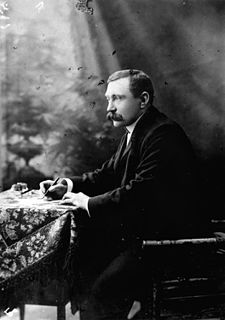
Daisy May Bates, CBE was an Irish-Australian journalist, welfare worker and lifelong student of Australian Aboriginal culture and society. Some Aboriginal people referred to Bates by the courtesy name Kabbarli "grandmother."

Ernestine Hill was an Australian journalist, travel writer and novelist.

Musgrave Park is a park in South Brisbane, Queensland, Australia. The park is bordered by Edmonstone, Russell, and Cordelia Streets, and Brisbane State High School, and has an area of 63,225 square metres (680,550 sq ft). The park is of cultural significance to Aboriginal Australians.
Elizabeth Ann Dewar Churcher was an Australian arts administrator, best known as director of the National Gallery of Australia from 1990 to 1997. She was also a painter in her own right earlier in her life.

Maude Rose "Lores" Bonney, was a South African-born Australian aviator. She was the first woman to fly solo from Australia to Britain.

Joice NanKivell Loch MBE was an Australian author, journalist and humanitarian worker who worked with refugees in Poland, Greece and Romania after World War I and World War II.

George Essex Evans was an Australian poet.

The Royal Brisbane and Women's Hospital is a tertiary hospital located in Herston, a suburb of Brisbane, Queensland, Australia. It is operated by Queensland Health, a department of the Queensland Government. The hospital has 929 beds, and it is estimated that 65% of the patients served come from within 15 kilometres (9.3 mi) of the hospital. It is the second largest hospital in Australia.

Daphne Mayo was a significant 20th-century Australian artist, most prominently known for her work in sculpture, particularly the tympanum of Brisbane City Hall, and the Women's War Memorial in ANZAC Square.

Joseph Augustine Clarke (1844–1890) early Queensland artist, painter, journal illustrator and arts-teacher.

Ethel Carrick, later Ethel Carrick Fox was an English Impressionist and Post-Impressionist painter. Much of her career was spent in France and in Australia, where she was associated with the movement known as the Heidelberg School.

George Henry Male Addison (1857–1922) was an Australian architect and artist. Many of his buildings are now heritage-listed.

Hilda Rix Nicholas was an Australian artist. Born in the Victorian city of Ballarat, she studied under a leading Australian Impressionist, Frederick McCubbin, at the National Gallery of Victoria Art School from 1902 to 1905 and was an early member of the Melbourne Society of Women Painters and Sculptors. Following the death of her father in 1907, Rix, her only sibling Elsie and her mother travelled to Europe where she undertook further study, first in London and then Paris. Her teachers during the period included John Hassall, Richard Emil Miller and Théophile Steinlen.

The Quandamooka people are Aboriginal Australians who live around Moreton Bay in Southeastern Queensland. They are composed of three distinct tribes, the Nunukul, the Goenpul and the Ngugi, and they live primarily on Moreton and North Stradbroke Islands, that form the eastern side of the bay. Many of them were pushed out of their lands when the English colonial government established a penal colony near there in 1824. Each group has its own language. A number of local food sources are utilised by the tribes.

Anna Frederika (Freda) Bage was an Australian biologist, university professor and principal and women's activist. Bage was born in 1883 and studied at Oxford High School for girls and Fairlight School. In 1907, Bage received her Masters of Science from the University of Melbourne and began an extensive career. Bage worked as a junior demonstrator in Biology and in 1908 won the King's College scholarship and in 1909 travelled to London working under Arthur Dendy which led Bage receiving a fellowship by the Linnean Society in 1910–11. Bage returned to the University of Melbourne where she worked as a senior demonstrator and in 1913 she was offered a job at the University of Queensland where she became a biology lecturer. On 8 February 1914 Bage became the first principal of The Women's College within the University of Queensland, which she held for 32 years. In 1928–29, Bage was president of the Australian Federation of University Women (A.F.U.W.), which names a scholarship in her honour, representing it at several conferences of the International Federation of University Women. In 1941, Bage was appointed Order of the British Empire (OBE) and in 1946 she retired. Freda Bage died in 1970 in Brisbane from cerebral arteriosclerosis.

Ethel Harriet Raybould B.A., M.A. (1899–1987), was the University of Queensland's first female Mathematics Lecturer who taught at the University from 1928 to 1955. She was one of the University's most generous benefactors with her bequest to the University of almost $1 million upon her death supporting fellowships, prizes, and a teaching facility.
Early Australian female aviators were generally active since 1927 when it became possible for an Australian woman to hold a pilot's licence and fly within Australia. Women had participated in gliding, or taken a licence overseas, but they had not been permitted to fly a plane under licence within Australia. The first Aero Club in Australia was established in 1915.
Thomas Ramsay Hall was an architect practicing in Brisbane, Australia, during the first half of the twentieth century and was involved in the design and construction of numerous major buildings in South East Queensland including the Queensland Heritage Register listed Brisbane City Hall.
Jennifer Watson is an Australian artist known for her paintings that combine text and images.
Anniebell Marrngamarrnga is an Aboriginal Australian artist from Maningrida in the Northern Territory of Australia. She is well known for her large-scale, intricate fibre sculptures.
















